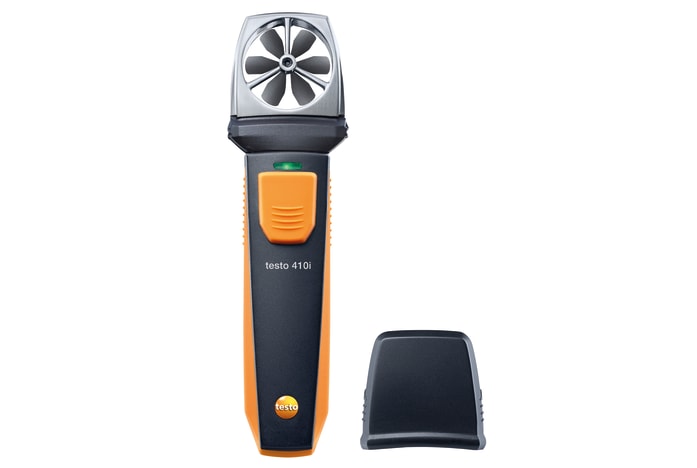Anemometers Introduced: Recognizing Their Value in Ecological Surveillance and Precaution
The role of anemometers in environmental monitoring and precaution is commonly taken too lightly, yet their value is undeniable. These tools have a lengthy background rooted in scientific inquiry and technological advancements, evolving to end up being important devices in numerous fields. From weather forecasting to aeronautics safety and security, anemometers play a critical duty in giving precise data that notifies decision-making processes and enhances total safety and security. Recognizing the details of anemometers introduces a world of vital insights that are fundamental to our understanding of the environment and the measures we require to make sure safety and security.
History of Anemometers
The advancement of anemometers can be traced back to the old worlds where basic wind measuring devices were initial used. One of the earliest well-known anemometers was the hemispherical mug anemometer created by Leon Battista Alberti in the 15th century.
Over the years, developments in innovation led to the advancement of more modern anemometers, consisting of ultrasonic anemometers and laser Doppler anemometers, providing enhanced precision and efficiency in measuring wind rate and instructions. The history of anemometers showcases an amazing journey of innovation and progression in the area of meteorology.
Types of Anemometers
Throughout the field of meteorology, different kinds of anemometers have actually been established to precisely measure wind speed and direction. Sonic anemometers make use of ultrasonic signals to gauge wind speed and direction properly. Hot-wire anemometers operate based on the concept that the cooling effect of wind on a warmed cable is proportional to the wind rate.
Applications in Weather Forecasting
Having talked about the different sorts of anemometers made use of in weather forecasting for measuring wind speed and direction, it is necessary to discover their practical applications in the field. Anemometers play an important function in weather forecasting by supplying exact and real-time information on wind problems (anemometer). Meteorologists make use of anemometers to monitor wind speed and direction to forecast weather condition patterns, problem warnings for severe weather events like tornados, hurricanes, and tornadoes, and evaluate weather for aviation security
In weather forecasting, anemometers aid in understanding local and regional wind patterns, which are important for predicting weather condition modifications and identifying climatic patterns. These gadgets are also made use of in study to examine microclimates, metropolitan heat islands, and air contamination dispersion. In addition, anemometers are used in agriculture to maximize plant management techniques, such as watering and pesticide application, based upon wind conditions.
Relevance in Air Travel Security
An important element of guaranteeing air travel safety and security hinges Discover More on the precise surveillance of wind conditions making use of anemometers. Anemometers play a vital duty in aeronautics by providing real-time information on wind speed and direction, assisting pilots in making informed decisions during take-off, touchdown, and trip. Solid and unpredictable winds can significantly affect airplane procedures, making it necessary for aeronautics authorities to rely on accurate wind dimensions to make certain the safety and security of guests and staff.

In the dynamic setting of aviation, where also minor modifications in wind speed and direction can have profound impacts, anemometers stand as vital tools for advertising secure and safe flight.
Duty in Environmental Research Study
How do anemometers contribute to developments in environmental study? Anemometers play an important duty in environmental research study by supplying necessary information on wind speed and direction. This information is vital for comprehending various atmospheric processes, such as air contamination dispersion, climate patterns, and climate adjustment. By image source properly gauging wind characteristics, anemometers aid researchers evaluate the motion of toxins airborne, analyze the impact of commercial emissions, and forecast the spread of contaminants in the environment.


Final Thought
In conclusion, anemometers have played an important function in environmental monitoring and safety steps. Comprehending the relevance of anemometers is crucial for accurately measuring wind speed and instructions, which is crucial for forecasting weather condition patterns, guaranteeing secure aviation procedures, and conducting ecological studies.
One of the earliest well-known anemometers was the hemispherical cup anemometer designed by Leon Battista Alberti in the 15th century. Over the years, improvements in technology led to the growth of even more contemporary anemometers, consisting of ultrasonic anemometers and laser Doppler anemometers, offering raised precision and performance in measuring wind rate and instructions. Hot-wire anemometers operate based on the concept that the cooling impact of wind on a heated wire is symmetrical to the wind rate. Meteorologists utilize anemometers to monitor wind speed and instructions to anticipate weather patterns, problem cautions for severe weather condition occasions like hurricanes, tornados, and typhoons, and analyze atmospheric conditions for air travel safety.
Recognizing the relevance of anemometers is necessary for precisely determining wind rate and instructions, which is essential for predicting weather patterns, making certain safe aviation operations, and carrying out environmental studies. (anemometer)